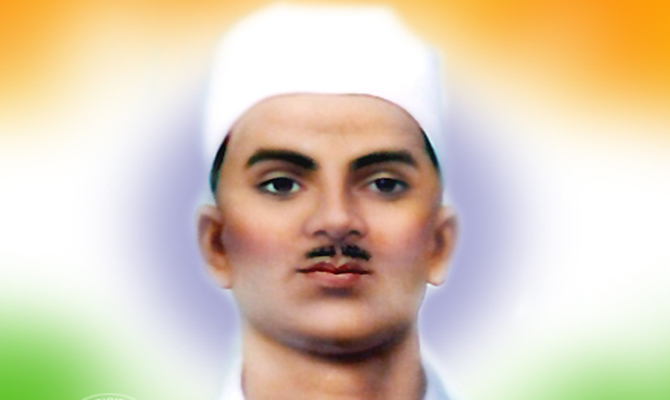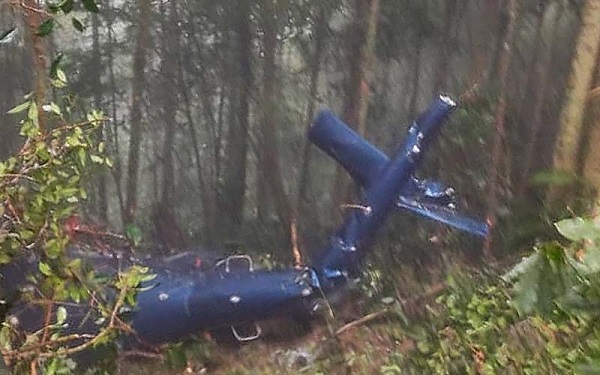THE ASIAN INDEPENDENT UK

Dr. Ramjilal, Social Scientist, Former Principal, Dayal Singh College, Karnal (Haryana-India)
Email: [email protected]
Sukhdev (full name: Sukhdev Thapar – born 15 May 1907, Ludhiana, Punjab – Martyrdom Day 23 March 1931) was a great freedom fighter, nationalist revolutionary, great socialist thinker, secular, great patriot, thinker, skilled organiser, sharp speaker, excellent debater, supreme self-sacrificer and exceptionally intelligent young man. He, along with his comrades, carried out many revolutionary activities and conspiracies, like the Kakori Conspiracy, the Central Assembly Bomb Conspiracy, and above all, the Lahore Conspiracy. Sukhdev had many pseudonyms in his revolutionary group – “Grameen”, “Kisan”, “Gawar”, “Swami” and “Dayal”. Sukhdev never cared about his attire, and his personality was very simple. In fact, he is the catalyst and glorious golden page of the Indian Socialist Revolutionary Movement.
Early Life and Education:
The famous revolutionary Sukhdev was born on May 15, 1907, in Naughara Mohalla of the famous Punjabi city of Ludhiana to Mrs .Ralli Devi and Mr. Ramlal Thapar (Arya Samaji). According to N.N. Vohra, former Governor of Jammu and Kashmir and current Chairman of the Tribune Trust, Chandigarh, Sukhdev was “my maternal uncle, my mother’s cousin. Because her mother died very early.” After the death of his parents, he was raised in Lyallpur, now in Pakistan, under the care of his maternal uncle and N.N. Vohra’s maternal grandfather, Lala Achint Ram Thapar. Sukhdev received his early education at Shri Sanatan Dharm School, Lyallpur, Pakistan, after which he joined National College, Lahore, for further education.
Influence on Sukhdev’s personality and thinking
Sukhdev’s early thinking and personality were greatly influenced by Lala Achint Ram, who was a member of the Indian National Congress ,and a strong opponent of British imperialism. Lala Achint Ram was a famous freedom fighter, patient and courageous, and was imprisoned for 19 years for participating in the freedom movement. Sukhdev was only 12 years old at that time, but the well-planned Jallianwala Bagh massacre (13 April 1919) left a deep impact on his heart and mind. Like other youths, like Udham Singh, Bhagat Singh and others, the atrocities committed by the British imperialist government left a deep impact on Sukhdev’s heart and mind, and he began to rebel from an early age.
After matriculation in 1922, Sukhdev joined the National College in Lahore, which served as a breeding ground for the activities of revolutionaries and nationalists. There, he met future young revolutionaries, such as Bhagat Singh, Yashpal, Ganpat Rai, Bhagwati Charan Vohra and others ,and received guidance and inspiration from teachers such as Principal Chhabildas and Vidyalankar.
He was a member of the Naujawan Bharat Sabha. He started revolutionary movements in Punjab and other areas of northern India. Naujawan Sabha was founded by Bhagat Singh in March 1926. Sukhdev was one of the leading members of Naujawan Sabha. His fluent, passionate and fiery speeches brought a new consciousness and awareness among the youth of the then-undivided Punjab and other areas of northern India. As a result, the spark of the revolutionary freedom struggle flared up in undivided Punjab.
A secret meeting was held on 8-9 September 1928 at the Firoz Shah Kotla ground in Delhi. In this meeting, Sukhdev and Bhagat Singh got the proposal passed to change the name of Hindustan Republican Association (HRA) to Hindustan Socialist Republican Association (HSRA) and add the word ‘socialism’ to it. The main objective of the Hindustan Socialist Republican Association was to ‘achieve independence from British imperialism’ and establish a ‘United Socialist Republic of India’, in which there would be ‘universal suffrage’ under the ‘dictatorship of the proletariat’ and ‘the elimination of parasites from the seat of power’, where ‘there is no exploitation of man by man’. Sukhdev was a staunch socialist and a skilled organiser. This is why he was entrusted with the responsibility of the secretary of the Punjab unit of this newly formed organisation. As a result, he played the most important and decisive role in formulating and implementing the policies, movement strategy and plans of the Hindustan Socialist Republican Association (HSRA). Like Lenin, Sukhdev believed that revolution can only be brought about by ‘trained professional revolutionaries’ armed with revolutionary ideology and determination. Sukhdev: Revenge for the death of Lala Lajpat Rai: Murder of John Saunders (– 17 December 1928): Chief planner. On 30 October 1928, when the Simon Commission arrived at Lahore Railway Station, slogans of ‘Simon Commission go back’ were echoing in the sky from the huge crowd of non-violent and peaceful protesters opposing it. This demonstration was led by Lala Lajpat Rai. Lahore Superintendent of Police James A. Scott ordered a lathi charge to disperse the non-violent and peaceful crowd. Superintendent of Police Stock himself attacked Lala Lajpat Rai with sticks, and he was seriously injured. He died on 17 November 1928 at the age of 63. As a result, the revolutionaries – Sukhdev, Shivram, Rajguru, and Chandrashekhar Azad – planned to kill Lahore Superintendent of Police James A. Scott to avenge Lala Lajpat Rai’s death ,and send a message to the British government. On 17 December 1928 at 4:03 pm, when Assistant Superintendent of Police John Poyntz Saunders (J.P. Saunders) came out of Lahore Police Headquarters (mistakenly identified as James A. Scott), Rajguru and Bhagat Singh immediately shot him. The revolutionaries did not aim to kill John Saunders. Rather, their target was Lahore Superintendent of Police James A. Scott. Although Sukhdev did not support violence, he justified the murder of JP Saunders and wrote to his colleagues on 7 October 1930, “Take the example of the Saunders murder. When Lala was beaten with sticks, there was unrest in the country. This was a good opportunity to draw people’s attention towards the party. The murder was planned in this way. It was not our plan to run away after the murder. We wanted to tell people that it was a political murder and its culprits were revolutionaries. Our action was always in response to people’s complaints. We wanted to instil revolutionary ideals in people, and the expression of such ideals sounds more glorious from the mouth of a person who has been hanged for his cause.”
The Public Safety Bill and the Trade Union Bill were introduced by the Central Government in the Central Legislative Assembly (now the old Parliament – Constitution House). According to this bill, the government could arrest any person without any reason. This was a conspiracy to control the nationalist agitational activities. The Central Committee of HSRA prepared a plan to oppose the Public Safety Bill and the Trade Union Dispute Bill in April 1929. According to this plan, Bhagat Singh’s name was not included in the meeting to throw a bomb in the Central Assembly in Delhi. Sukhdev was not present in the meeting when the Central Committee took this decision. He opposed this decision because Bhagat Singh could explain the objectives of HSRA in a better way.Sukhdev’s views forced the committee to change its decision, and Bhagat Singh was selected to throw the bomb in the Assembly…’
On 8 April 1929, when the Public Safety Bill was being debated (at 12:30 p.m.), Bhagat Singh and his companion B.K. Dutt carried out two low-intensity bomb explosions and threw pamphlets in the Central Legislative Assembly. Slogans such as ‘Inquilab Zindabad’, ‘Down with British Imperialism’ and ‘Workers of the World Unite’ were also raised. It is our firm opinion that Sukhdev was the catalyst for Bhagat Singh in the Central Assembly bomb blast case (8 April 1929).
Sukhdev was the mastermind behind the Lahore Conspiracy Case. This is why the name of the Lahore Conspiracy Case 1930 is “Crown-(Complainant) Vs Sukhdev and Others”. In April 1929, Senior Superintendent of Police Hamilton Hardy filed an FIR against 27 accused in the special court of Magistrate R.S. Pandit. According to the FIR, Sukhdev was in first place, Bhagat Singh in 12th place and Rajguru in 20th place. Kuldeep Nayyar writes in his book ‘Without Fear, The Life and Trial of Bhagat Singh’, ‘The executioner asked, ‘Who will go first? Sukhdev replied, I will go first.” The executioner pulled the noose three times, one after the other. The bodies of all three were hanging from the gallows for a long time.” On 7 October 1930, the tribunal fixed the date of hanging of the three great revolutionaries – Sukhdev, Bhagat Singh, and Rajguru – on 24 March 1931. According to the decision of the tribunal, these revolutionaries were to be hanged on 24 March 1931, but in view of the public outrage, they were hanged in the Central Jail by breaking the wall from the back of Lahore Jail at 7.30 pm on 23 March 1931, one day earlier (11 hours).
The bodies of the three great revolutionaries – Sukhdev, Bhagat Singh and Shivraj Hari Rajguru – were taken out of the jail. That very night, all three bodies were taken to the banks of the Sutlej River – Hussainiwala Border near Ferozepur, where a mass pyre was made, and they were burnt by pouring kerosene oil on them. The half-burnt bodies of these three martyrs were thrown into the Sutlej River. But before dawn, the villagers took out the half-burnt bodies from the river and cremated them.
On 24 March 1931, The Tribune (Lahore) first published this incident on its front page. (‘Bhagat, Rajguru And Sukhdev Executed’, The Tribune, Lahore, 24 March, 1931, p.1.) As a result, public anger reached its peak. People’s mobs erupted in Mumbai, Madras, Bengal, Punjab and Uttar Pradesh. For the first time since 1857, such a fierce encounter took place between the public and the police. As a result, 141 Indians were martyred in this conflict, 586 people were injured and 341 people were arrested. In short, their martyrdom created a new revolutionary zeal and wave among the people.
(Note: Dr. Ramjilal is the author of Political India 1935-42: Anatomy of Indian Politics (Ajanta Publications, Delhi, 1986).)








